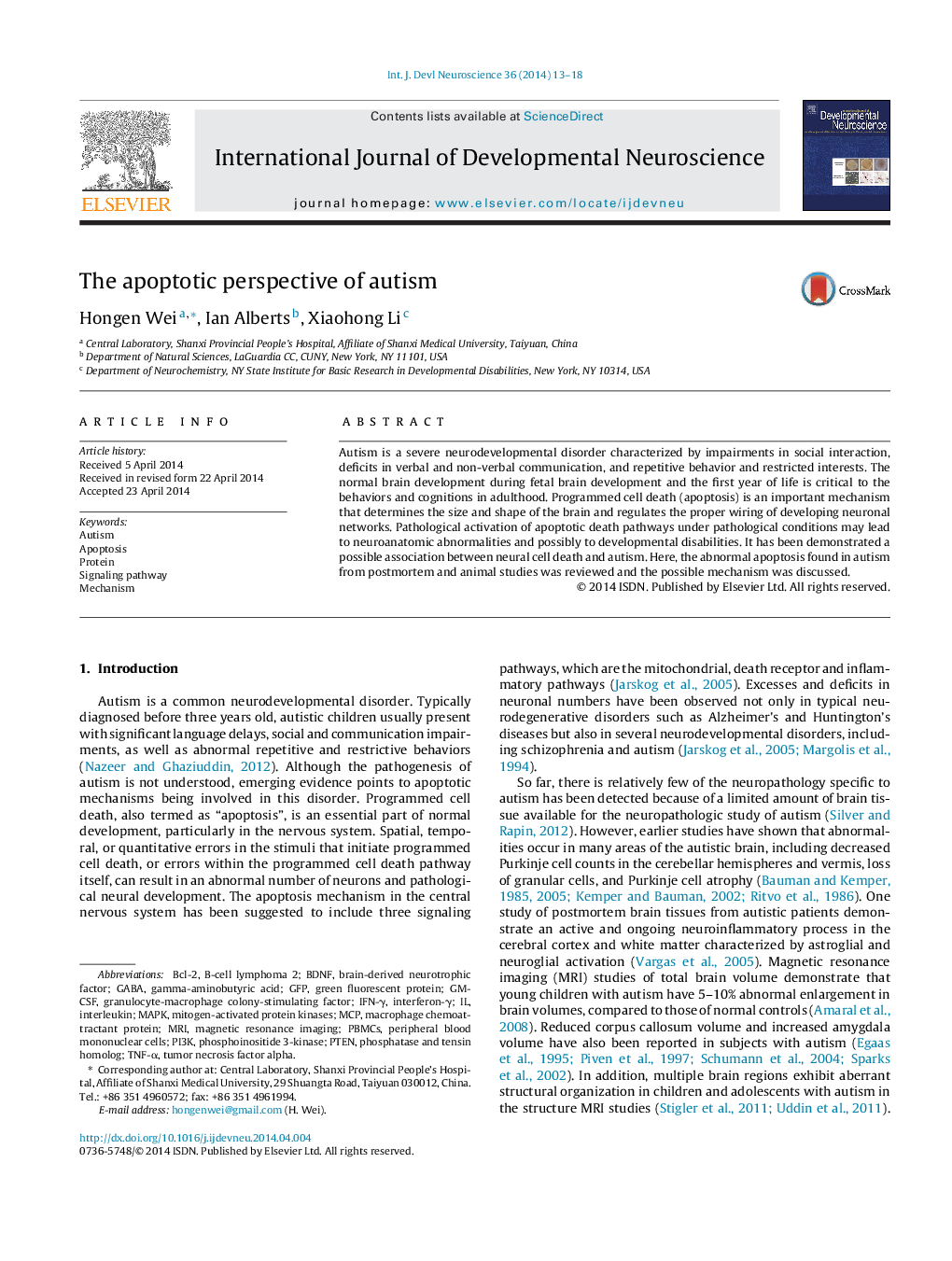| Article ID | Journal | Published Year | Pages | File Type |
|---|---|---|---|---|
| 2785903 | International Journal of Developmental Neuroscience | 2014 | 6 Pages |
•The neuropathologic evidences suggest that an apoptotic mechanism was involved in the pathophysiology of autism.•Abnormal apoptosis findings in autism from postmortem and animal studies are reviewed.•A possible working mechanism of apoptosis involved in the pathogenesis of autism is proposed.
Autism is a severe neurodevelopmental disorder characterized by impairments in social interaction, deficits in verbal and non-verbal communication, and repetitive behavior and restricted interests. The normal brain development during fetal brain development and the first year of life is critical to the behaviors and cognitions in adulthood. Programmed cell death (apoptosis) is an important mechanism that determines the size and shape of the brain and regulates the proper wiring of developing neuronal networks. Pathological activation of apoptotic death pathways under pathological conditions may lead to neuroanatomic abnormalities and possibly to developmental disabilities. It has been demonstrated a possible association between neural cell death and autism. Here, the abnormal apoptosis found in autism from postmortem and animal studies was reviewed and the possible mechanism was discussed.
